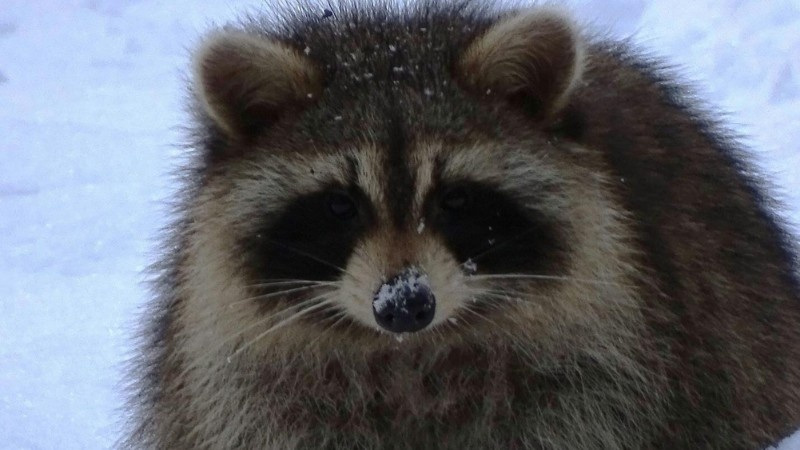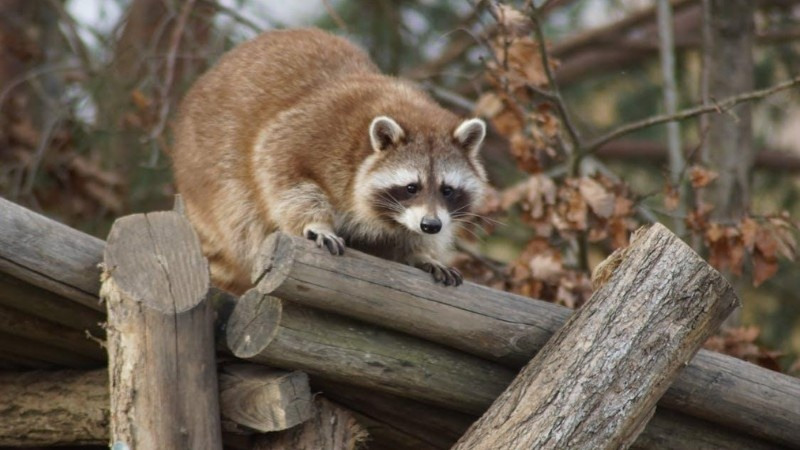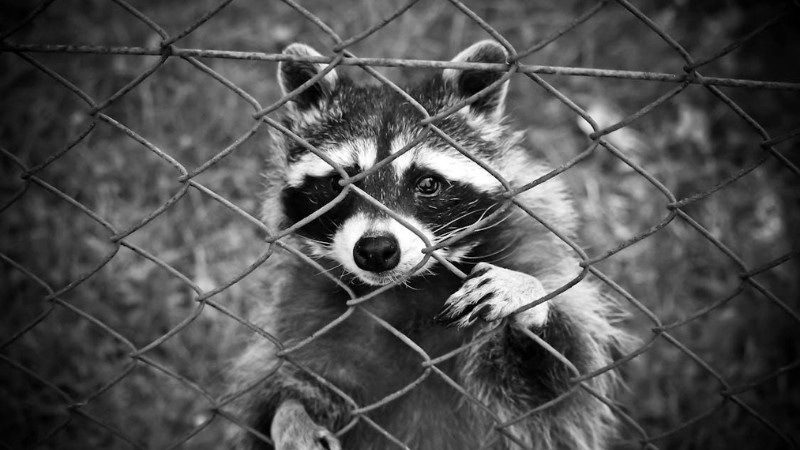Do I Have To Worry About Raccoons In Winters?
Reading time: 5 minutesWinter is the season when most animals settle in for their long winter nap, but raccoons, well, they didn’t really get the memo. These mischievous critters don’t hibernate; they just slow down and get sneakier.
They do spend more time in their dens, but they’ll still venture out for food, warmth, or shelter. And that means they’re eyeing your attic or garage.

If you’re hearing thuds or discovering trash strewn about, raccoons have been out and about. Let’s uncover why raccoons are still a winter worry and how to keep them out.
Do Raccoons Hibernate? Understanding Winter Behaviour
Raccoons may appear to disappear during winter, but they don’t truly hibernate. Instead, they enter a state called torpor, a period of reduced activity that helps conserve energy during extreme cold.
While they sleep for longer stretches, raccoons remain semi-active and will venture out when temperatures are milder. Some winter habits of raccoons include:
- Opportunistic Scavenging: Raccoons live off stored body fat during the coldest stretches but still leave their dens in search of food, often raiding trash bins, compost heaps, or pet food left outside.
- Shelter Seekers: Warm, dry spaces become raccoon hotspots in winter. Attics, garages, sheds, and even under decks provide them protection from harsh weather. Their dexterous paws and climbing abilities make your property an ideal winter retreat.
- Nocturnal Adventures: Raccoons are naturally nocturnal, so they’re still most active at night. Even in winter, you might catch them scurrying through yards or hear noises if they’ve set up shelter indoors.
- Water Hunters: Though raccoons eat nearly anything, they also seek out water sources in winter. Birdbaths, pet water bowls, and outdoor ponds become essential stops for a thirsty raccoon.
- Persistent Problem-Solvers: Raccoons are incredibly resourceful and determined. They’ll pry open garbage can lids, tear apart screens, or squeeze through surprisingly small openings to find food or shelter.
- Family Dens: Raccoons sometimes den in groups during winter for shared warmth. While typically solitary, mothers with young or multiple raccoons may settle together in cozy spaces like attics or garages, amplifying the nuisance.
- Trail Markers: Raccoons leave behind muddy paw prints, droppings, and smudges near entry points or around trash bins. These clues are especially visible in snow or mud and signal their frequent visits.
- Stash and Snack: Raccoons hoard food when they find it, often dragging leftovers into their shelter. This can lead to unpleasant odours, mould, and messes in hidden areas like under decks, crawlspaces, or storage sheds.
How Raccoons Are a Problem in Winter

1. Damage to Property
In their search for warmth, raccoons will tear through your yard, your vents, or soffits to access attics or crawl spaces. Once inside, they wreak further havoc.
- Digging through frozen lawns, gardens, or mulch in search of grubs.
- Shredding insulation in your attic to create nests.
- Chewing through electrical wires creates fire hazards.
- Damaging drywall and structural components.
2. Health Risks
Raccoons aren’t just a nuisance; they pose significant health hazards as well:
- They may break into garages, pantries, or sheds to scavenge food, contaminating pet food bags, stored grains, or compost bins.
- They may sometimes carry diseases such as rabies, canine distemper, leptospirosis, and raccoon roundworm, both of which can harm humans and pets.
- Their droppings often contain harmful parasites that can contaminate living spaces. Handling or inhaling particles from dried droppings can lead to infections or illness.
3. Noise and Nuisance
If raccoons find a way to nest inside your attic, their nighttime activity can make you feel like you’re living above a bowling alley. You’ll have to get used to:
- The thumping sounds as they move around.
- Scratching noises while they build nests or claw surfaces.
- Occasional growling or chittering, especially if they feel threatened.
4. Messy Invaders
Raccoons are opportunistic scavengers, especially in winter when food is scarce. They’ll rummage through:
- Trash bins, often tipping them over and spreading debris.
- Compost piles, drawn by the scent of food scraps.
- Pet food bowls left outside, creating a mess and potentially attracting more wildlife.
How to Prevent Raccoons from Invading in the Winter
- Secure Your Property: Raccoons are masterful at squeezing into tight spaces, so start by inspecting your home’s exterior for potential entry points. Check vents, chimneys, loose shingles, or cracks in the soffits. Use steel mesh (which is durable and raccoon-proof) to seal any gaps. Chimney caps are also a must to prevent raccoons from slipping in and setting up camp in your attic.
- Secure Garbage Bins: If there’s one thing raccoons love, it’s garbage night. Use heavy-duty bins with tight, lockable lids that raccoons can’t pry open. For added protection, consider storing your bins in a garage or shed overnight to keep them out of reach. Don’t make it easy for these opportunistic scavengers to find dinner.
- Remove Food Sources: Raccoons are highly motivated by food, so eliminate their midnight snacks. Avoid leaving pet food or water bowls outside overnight, and regularly clean up fallen fruits, birdseed, or compost piles. If you compost, use a secure bin and avoid adding meat or oily foods, as these are raccoon magnets.
- Trim Trees and Shrubs: Tree branches hanging close to your roof can act like a bridge for raccoons looking to explore your attic. Trim back any overhanging limbs, and clear away dense shrubs near your home that could serve as hiding spots. A little landscaping goes a long way in deterring these clever critters.
- Install Motion-Sensor Lights: Bright lights are an excellent deterrent for nocturnal raccoons. Install motion-sensor lights around key areas like garbage bins, sheds, and entry points to startle them when they approach. The sudden burst of light makes them think twice about sticking around.
- Maintain Your Yard: Raccoons love clutter, so keep your yard tidy. Remove woodpiles, debris, or abandoned structures that provide shelter and warmth during the colder months. By clearing these out, you’re taking away prime nesting spots that might invite a raccoon family to settle in for the winter.
Why Professional Wildlife Removal Is the Best Solution

When it comes to raccoons, DIY removal can be a risky game of cat and mouse—or raccoon and you. Raccoons, especially mothers protecting their kits, can become hostile when cornered, leading to bites and scratches. On top of that, without proper gear, handling raccoons exposes you to some injuries.
That’s why hiring a local wildlife removal company makes sense. Some benefits include:
- Our professionals use safe, humane trapping techniques to relocate raccoons without harm.
- Experts pinpoint entry points and use exclusion methods to stop raccoons from returning.
- We provide thorough property inspections to identify and address vulnerabilities in your home, such as damaged vents or loose soffits.
- Our pros know where raccoons hide, nest, and cause damage, ensuring long-term solutions.
- We handle clean up and sanitization of contaminated areas, safely removing raccoon droppings and reducing health risks
Humane Solutions for Winter Raccoon Trouble
Raccoons might not hibernate, but that doesn’t mean you have to lose sleep over their winter antics, either. Whether they’re nesting in your attic or raiding your garbage bins, our humane wildlife trapping and removal services ensure these masked bandits are evicted safely and responsibly.
Reclaim your space. After all, your attic isn’t a raccoon timeshare. Get your free estimate.
We proudly serve Calgary, Edmonton, Red Deer, Saskatoon, Winnipeg, and the Okanagan, and Kelowna.

